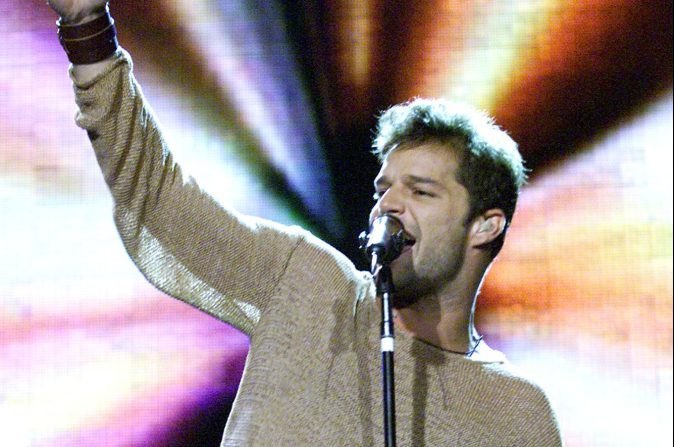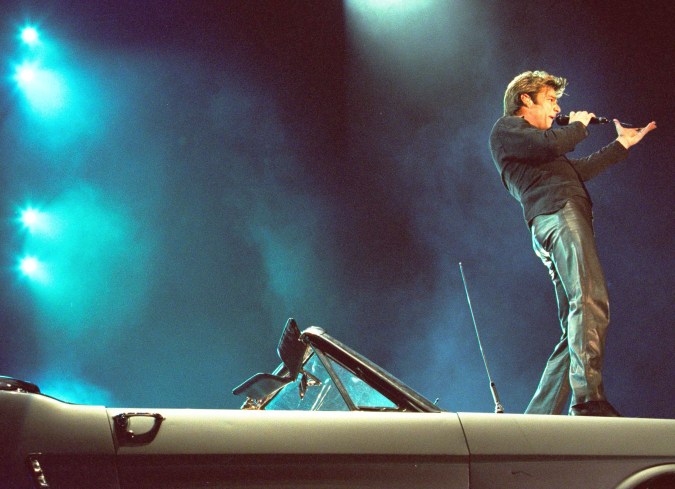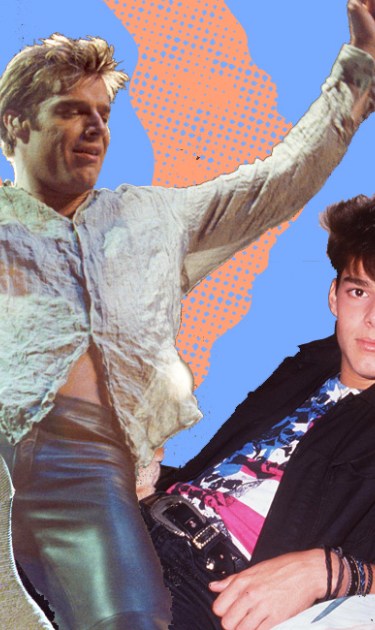In June of 1999, a month after his English-language album debut, Ricky Martin performed live on the Today Show. Hosts Katie Couric and Matt Lauer’s voices couldn’t compete with the sea of screaming fans outside of Rockefeller Center while they introduced their guest as “the Puerto Rican Elvis.”
Wearing a torso-hugging long-sleeve spandex top with loose palazzo pants (yes, it was still the 90s), the 27 year-old Martin delivered “Livin’ La Vida Loca” in perfect character – with all his hip-swiveling, shoulder-shaking glory.
But during the interview, the Puerto Rican artist’s attempt to explain to Couric, Lauer (and America) that he was more than an overnight success story fell on deaf ears. “It’s been 10-15 years of intense work, discipline and sacrifices that got me to where I am today,” said the former Menudo singer in flawless English, adding that even though he’d dabbled in acting, he was now focused on his musical career. “I’m talking about longevity, I want to do this for the rest of my life….” he uttered, abruptly interrupted by Couric. “Aren’t you afraid you might be a flash in the pan?” she said, unaware of his already fruitful career.
“Ummm, well, I think any entertainer would be afraid…” Martin began to reply, but she didn’t let him finish. “Are you going to sing ‘Maria’ for us?” she asked. Couric – and seemingly the rest of America – did not care what he had to say. They just wanted to see him shake his bon-bon again.

Ricky Martin’s mainstream American narrative was written: this was the “spicy” Latin crossover.
Even now, on the 20th anniversary of his second self-titled album which was released on May 11th, 1999, Latin music still battles the designation of fleeting novelty in popular American culture. The waves in which Latin music’s wider acceptance come and go are often reduced to “Latin music explosions.”
Yes, Martin’s rapid rise (and subsequently, that of Shakira, Enrique Iglesias, and Jennifer Lopez) was part of this same cycle dating back to the 1950s mambo craze. And it’s easy to dismiss Ricky Martin as a manufactured commodity of the pop machine – one of the last formulaic bastions of a pre-internet music industry that was on the verge of collapse. But what Martin did was momentous. He was an established Latin American star who started from scratch (albeit with major record label support behind him) on the mainland and helped level the playing field.

To be fair, Martin did have an overwhelming advantage. He exemplified the epitome of Puerto Rican “blanquito” middle class values, completely at odds with the pop culture stereotypes of thugs or West Side Story type gangsters. As Frances Negrón Muntaner wrote in her 2004 book Boricua Pop, “In contrast to most of his critics worldwide, when Ricky’s hips quiver I do not think about this limited vocal prowess, but of the difficulties of transfiguring shame from Puerto Rican national identity…and when the music plays, I marvel at why it took so long for boricua suburbia to take center stage.”
But for white America, Martin signified a Latino – specifically a Puerto Rican – who was acculturated and palatable. For many Latinos, even if in hindsight it was for all the wrong reasons, seeing him up there in the spotlight, beloved by the masses felt validating.

20 years ago Ricky Martin gave Latinx culture visibility, and presented a different version of what being a Latino pop star could be: Americanized, bilingual, pop-loving, queer (albeit closeted), and yes, even light-skinned. Now, a “Latinx” artist can mean anything from Maluma to Amara La Negra to Cuco. There’s no set formula, genre or language that defines us.

Even when reggaeton “broke” on the mainland just a few years later, those often darker and less “palatable” stars were denied the same kind of open-armed welcome Martin received.
J Balvin and other reggaetoneros now often boast that they don’t need to sing in English to find success with mainland American or worldwide audiences. But it was the work of people like Martin, acting as sacrificial “Latin crossover lambs” who helped make it possible.
And yes, in retrospect, Ricky Martin is often looked at as a cheesy Latino stereotype – and many powers that be from the time saw to it that his perceived “otherness” could be used as a selling point to market an otherwise common pop sound.

But ultimately, as a light-skinned, middle class Puerto Rican, it wasn’t terribly far-fetched for him to record in English, even if Americans still saw him as exotic and ethnic.

Just a year after Ricky Martin’s big arrival, the Latin Grammys were first broadcast in English on CBS, where they would continue to air for a few years. In 2005, the award show moved to Univision, broadcasting in Spanish for older US-Latino audiences and Latin American markets. But in many ways, Latinidad feels more tokenized than ever.
Earlier this year – twenty years after he performed “The Cup of Life” at the Grammys – Martin was back on the awards show stage. But this time, he served as an accessory to Camila Cabello along with J Balvin. Their “Havana” performance, which opened the show, reeked of the long-tired West Side Story tropes we’ve fought to unshackle Latinidad from. Ricky Martin (a veritable icon, however flawed) and Balvin (major worldwide star) were an afterthought, with each having literally 10 seconds to sing, and with Balvin singing: “Y dónde está mi gente?”

Aquí. We’re still here, America.




